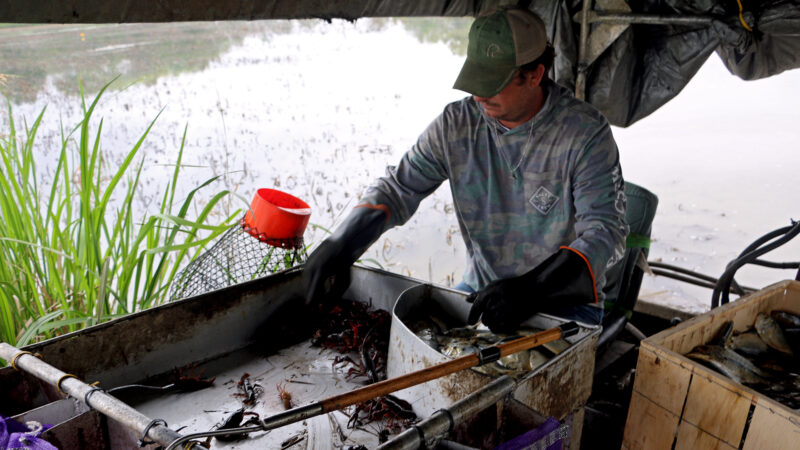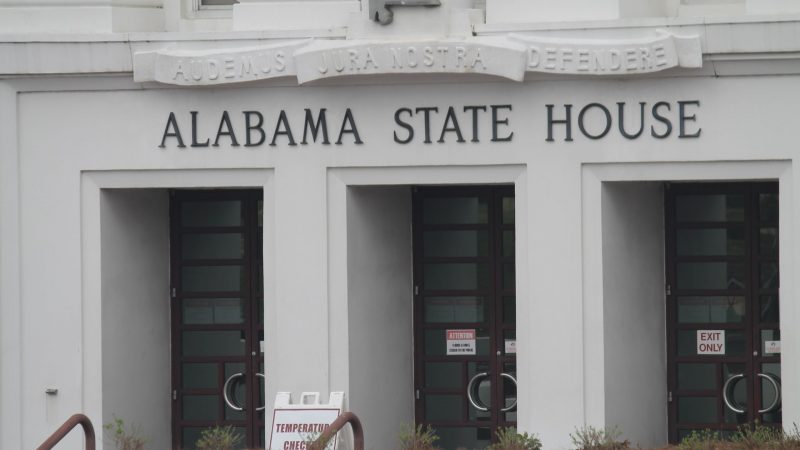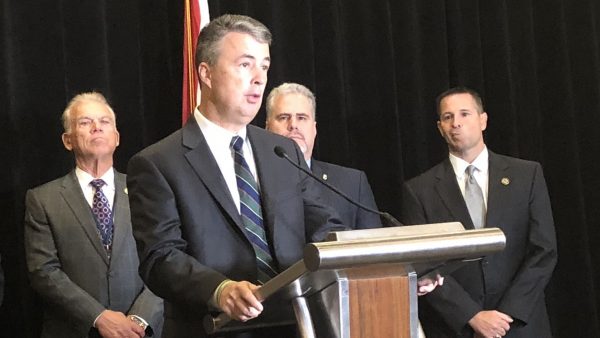How History Can Heal
Historical markers and memorials around Birmingham are reminders of the city’s painful and violent civil rights past. But they can also be means for reconciliation. That’s what Vanderbilt University graduate student Stephanie Fulbright argues.
In her research, she looked at these public objects in Birmingham, and in Northern Ireland where residents endured years of conflict between Roman Catholics and Protestants in what they call “The Troubles.”
Think Like a Historian
Fulbright draws a distinction between “memory” and “history.” Both look at the past, but they do so in different ways.
“Memory is based on emotion. It’s based on how we feel,” says Fulbright. Memory could be thought of as the stories a family elder tells around the dinner table.
Memory is “squishier” than the discipline of history, which is based on source material and facts. But Fulbright says that doesn’t mean history is beyond criticism while memory is unreliable.
“Facts require interpretation and so there always is a level of subjectivity in there,” says Fulbright. “I think it’s important to not disregard either end of that [memory and history].”
Fulbright says learning to think like a historian through questioning sources, wrestling with conflicting opinions and becoming more curious makes people more empathetic. That in turn, she says, can lead to reconciliation and healing.
A Platform for Conversation
Fulbright says historic markers, public art, and museums can be examples of history and memory that allow people to discuss different views.
“[They can say] Alright what do you think about this?” says Fulbright. “That’s encouraging that type of thinking.”
Fulbright also looked at churches and social justice organizations in Northern Ireland that worked to add complexity and nuance to the traditional historical narratives. She says those who led these programs said people from both sides of the conflict developed empathy as they recognized their own experiences but also learned more about the other side.
“People built friendships out of these classes,” says Fulbright. ”[They] now had a greater appreciation for the story of the other side, but also now knew someone on the other side and had a personal relationship with them.”
Fulbright says the most successful reconciliation work she observed was on this personal level. But she says this kind of discussion can apply to truth commissions or debating how history is taught in schools.
“For reconciliation and healing to take place, I think there does need to be this recognition of a shared humanity,” says Fulbright. “That is a hard thing to do on a mass scale.”
Comparing Birmingham to Belfast
Fulbright says both cities have museums to record their tumultuous pasts. But the way they approach them is different.
“The Birmingham Civil Rights Institute, I think, has a much clearer vision of the story they want to tell than the Ulster Museum [in Belfast],” says Fulbright.
She says the Ulster Museum takes a conservative approach by not saying too much in an attempt to appease both sides. She says BCRI presents its interpretation of history and the reasons for it.
“I think it’s a much stronger result,” says Fulbright.
Fulbright says the 16th Street Baptist Church, the site of a Ku Klux Klan bombing that killed four black girls in 1963, does a good job of telling the story of its involvement in the Civil Rights Movement along with presenting the church as a living congregation today.
Meanwhile churches in Northern Ireland mostly stood aside as conflict raged between Protestants and Catholics and did little to intervene to stop the fighting.
“It’s a lot harder to find acknowledgement of the Troubles in churches in a formal way,” says Fulbright.
Bringing the Research Home
Fulbright says this kind of conversation is too often confined to academia, but she believes there is application for those living in the South trying to deal with this history. She says people should consider how they think about the past and be more observant of the stories that are told.
“Starting to have an awareness of…these themes keep coming up. There seems to be something there,” says Fulbright. “Or we only talk about this thing and we never talk about this other thing. I wonder why that is?”
That goes for formal history and when Grandma’s reminiscing.
Hear an extended interview with Fulbright:
How food stamps could play a key role in fixing Jackson’s broken water system
JXN Water's affordability plan aims to raise much-needed revenue while offering discounts to customers in need, but it is currently tied up in court.
Alabama mine cited for federal safety violations since home explosion led to grandfather’s death, grandson’s injuries
Following a home explosion that killed one and critically injured another, residents want to know more about the mine under their community. So far, their questions have largely gone unanswered.
Crawfish prices are finally dropping, but farmers and fishers are still struggling
Last year’s devastating drought in Louisiana killed off large crops of crawfish, leading to a tough season for farmers, fishers and seafood lovers.
Lawmakers consider medical cannabis revamp
It’s been three years since Alabama lawmakers passed legislation establishing a system to govern medical cannabis in the state, yet not one prescription for the drug has been filled. The rollout has been delayed by lawsuits and conflict over the licensing process.
Man arrested in connection with device that exploded outside Alabama attorney general’s office
Kyle Benjamin Douglas Calvert, 26, of Irondale, Alabama, was arrested Wednesday on charges of malicious use of an explosive and possession of an unregistered destructive device, the U.S. attorney’s office said.
For some Gulf South schools, a March Madness loss can still be a win off the court
Making it into the NCAA Tournament can translate to boosts in student enrollment, athletic involvement, merchandise sales and more for participating schools.







